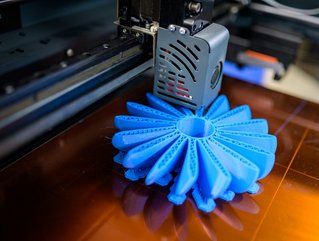3D printing technology 'will change supply chain forever'

Noted US supply chain lawyer and author, Dennis Unkovic says 3D printing will permanently change the global supply chain as we know it.
“The global supply chain will be upended by 3D printing,” Unkovic says, “And it will be a reality sooner than most expect.”
Unkovic - who’s been named in the Best Lawyers in America list for the past two decades - explains why 3D printing will turn supply upside down in his explosive new book, ‘Transforming the Global Supply Chain: Cyber Warfare, Technology, and Politics.'
One-time US Senate legislative counsel Unkovic has been a supply chain lawyer for 35 years, handling international business transactions, mainly between the US and both China and Japan.
Pandemic 'didn't break supply chain'
“My book’s message is that the global supply chain is broken,” he says. “Many assume the pandemic is the reason for the collapse - it’s not. Trends that were already underway are responsible.”
One of these trends, he says, is 3D printing.
3D printing is a method of creating a three-dimensional object, layer-by-layer, using a computer-generated design. It’s an additive process, with layers of material built up to create a 3D part. It's sometimes known as ‘additive manufacturing’.
The technology started out as a way to produce prototypes with no machine tooling, but over the past 10 years 3D printing has evolved rapidly, and has now been widely embraced. Those already widely using the technology include:
- Manufacturers of consumer and industrial goods
- Defense and aerospace industries
- Automotive companies
- Component suppliers
- Healthcare and dental industries.
3D printing can ease Chinese labour issue
Unkovic says there are multiple factors that will see 3D printing technology change supply chains forever - chief among which is that Chinese labour is no longer cheap.
He says: “Labour costs in China have continuously risen over the past 25 years. Higher-cost Chinese labour is already forcing companies outside China to rethink how and where to locate their sourcing of products and components.”
This, he points out, provides perfect economic conditions for 3D printing “because it requires little labour and it makes operating sprawling plants in China far less attractive.”
Unkovic also believes that the increasingly intricate nature of mechanical and electronic components plays into the hands of 3D printing.
Complex goods perfect for 3D printing
“If you need to buy a simple component in quantities of thousands or millions, then traditional manufacturing makes sense,” he says. “But complex products are by their nature composed of many sub-components, and 3D printing makes it possible for a printed product to be infinitely more complex in structure.
Unkovic lists transportation as another prime mover of 3D printing adoption.
He says: “The pandemic made global suppliers and consumers more aware that timeliness is critical in moving goods from one place to another, particularly from one side of the world to the other.
“With China the world’s largest producer of consumer goods, Covid starkly revealed that a product manufactured in China isn’t guaranteed to arrive in the US or anywhere else in a timely fashion.”
This, he says, makes the point of manufacture critical to supply chains that face intense time pressures. Medical supplies, such as PPE equipment during the pandemic, is but one example.
“Companies that desperately need key components are incentivised to look to 3D printing to fill the gaps.”
Possible to 3D-print metal, resin carbon
Other factors Unkovic lists as likely to speed the uptake of 3D printing include:
- Customization. He says today’s consumer is less happy to buy mass-produced goods, and are increasingly looking for personally tailored products. “A strength of 3D printing is that any item can be redesigned or changed in subtle or significant ways without the cost of major retooling,” he says.
- Innovation. Unkovic points out that 3D printing, once slow and limited, has now advanced to the point where multi-jet fusion printers can produce thousands of parts at speed, and that server farms now power hundreds of 3D printers that are available for use from dedicated suppliers.
- Print mediums. An early drawback of 3D printing, says Unkovic, was it only worked with plastics. Now substances that can be printed also include powders, resins, metals, carbon and even flesh. These can also be combined, to produce products that are beyond traditional manufacturing methods.






